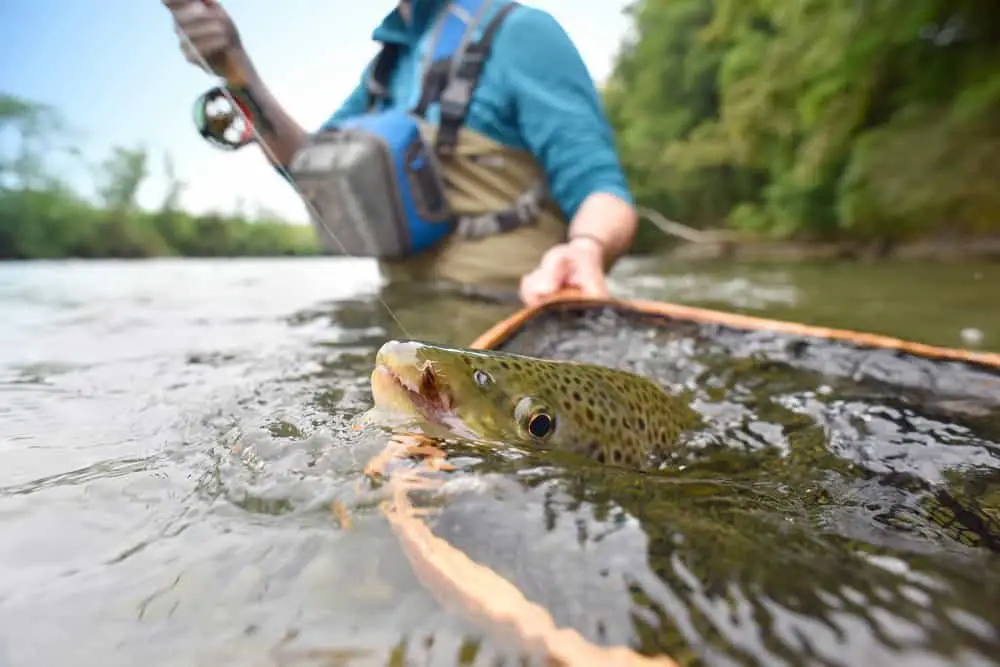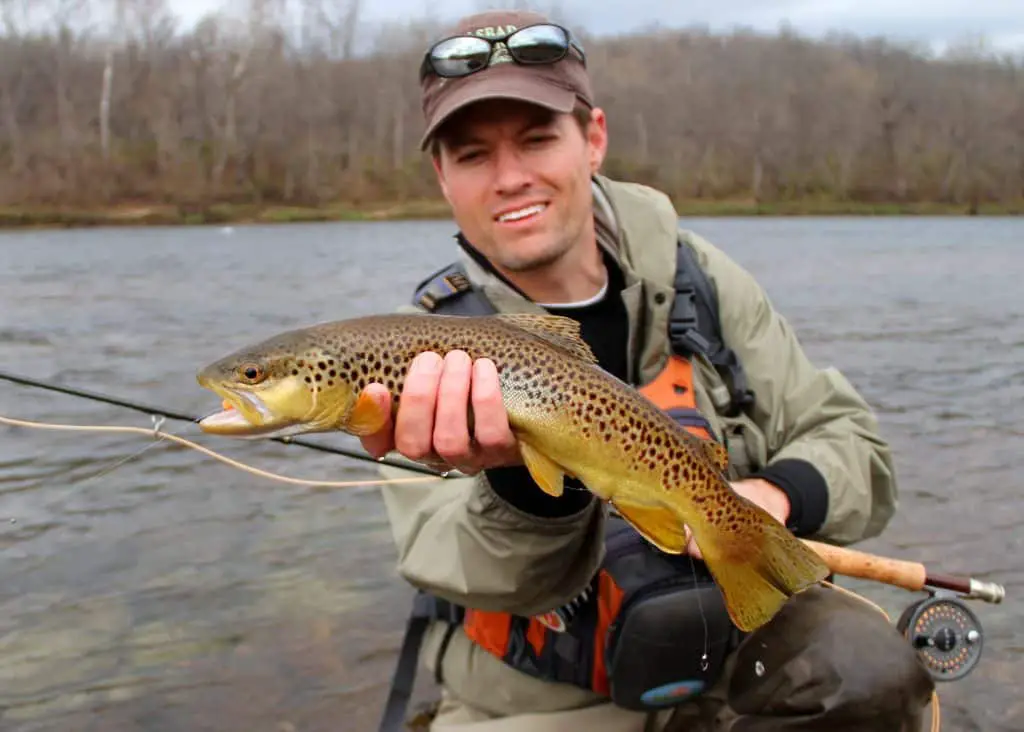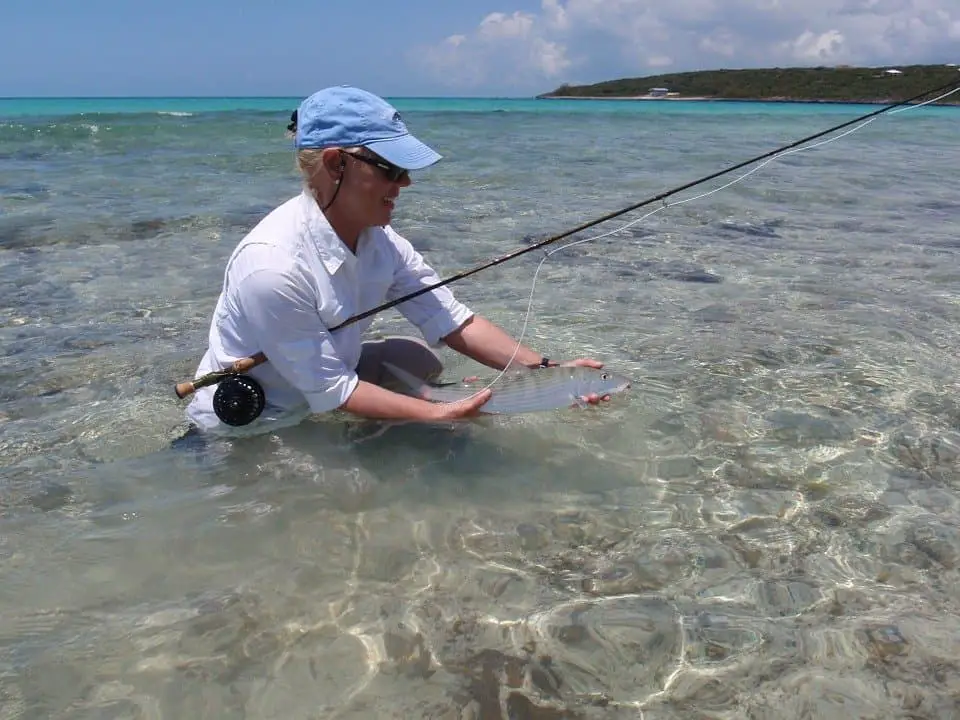As an Amazon Associate we earn from qualifying purchases.
As a fly fishing novice, one of the best things you can do to learn more about fly fishing is to simply spend more time around people who love to fly fish. And fly fishermen or women aren’t difficult to find. Just head to your local brewery, and look for the group of sun burned, unshaven, spf-clothing-clad folk surrounded by an aura of outright lies and exaggerations.
Once you find these people, enter the conversation by whatever means at your disposal, and begin to absorb. Listen to the areas they talk about fishing, the methods they discuss, and the fibs they tell. I promise you, it will make you a better fisherman (or maybe even give you some company on the water).
But at some point in these conversations, you may begin to overhear phrases you may not understand. Confusion will arise if you’re uneducated on the vernacular, but
So today we’re going to discuss one commonly held perplexity: Fly Fishing Leader vs Tippet.
Table of Contents
What is fly fishing leader?
Fly fishing leaders are a section of tapered monofilament fishing line, usually 7.5 to 9 feet long, that act a the connection between the fly line
your fly or tippet (and then fly).
What is fly fishing tippet?
Tippet is a uniform length of monofilament fishing line that attaches the leader to the fly, and extends the life of the leader.
Why are fly fishing leader and tippet important?
Successful fly fishing relies on deception as its weapon.
Fish do not want to swallow an animal hair covered metal hook that is destined to pierce their jaw. They want to eat what that animal hair is intended to imitate- be that an aquatic insect, terrestrial bug, baitfish, whatever.
So, one of the primary objectives of fly fishing is creating the most realistic presentation of that metal hook covered in animal hair to make the fish less likely to suspect it to be an imitation.
That means using realistic appearing flies, making those flies approach the fish in a natural way, and distracting the fish from the fact that those flies are attached to a section (or two) of monofilament line that is attached to a fly line, which is connected to backing that is spun around a reel which is screwed onto a rod that is held by an eager fisherman.
What does that have to do with leader and tippet?
You’ll notice that your fly line is not transparent: in fact, it may even be brightly colored. That doesn’t make it particularly adept at going unnoticed by suspicious fish. A fish would almost certainly never take a fly that was attached directly to the obvious fly line.
Fly Fishing Leader
Leader is used in fly fishing primarily to deceive the fish. Whereas the opaque, brightly colored fly line is easily visible and incriminating to suspecting fish, the transparent monofilament leader is much less visible, and therefore less suspicious. When a fly sees a fly tied to a section of the appropriate sized leader, they will usually not notice it.
That is why leader sections are usually 7.5 to 9 feet long- that distance separates the fly, which you’re hoping a fish will believe is a food item, from the fly line, which fish will certainly believe is dangerous.
But leaders also serve a secondary function. As you recall from earlier, section of leader are tapered monofilament. And though the primary benefit of using this line is that it is transparent, its tapered design also comes with the advantage of improving casting.
The tapered line will be the thickest diameter at the end attached to your fly line, and the thinnest where it’s attached to the fly. While your fly is soaring through the air during a cast, this taper of your leader creates efficiency in the motion and allows the fly to land more gently on the water.
If you simply used monofilament line with a consistent girth, the fly would cast less accurately, you would have to work harder to cast, and at the end of it all your fly simply flop onto the water, scaring any fish nearby. When using tapered leader, the fly will land without a disturbance.
Fly Fishing Tippet
Tippet has similar benefits to leader. Tippet is equally as transparent, so it further distances the fly from the threatening fly line. Also, because the appropriate sized tippet will as thin or thinner than the end of the leader, it continues the tapered nature of the leader thus improving the casting.
So, it’s appropriate to view the tippet as basically a physical extension of the leader. And in fact, being an extension of the leader is its primary practical benefit.
As you’re fishing, you will often have to change flies for a variety of reasons. Flies deteriorate, as they are repeatedly casted and eaten by fish. Hooks have an unyielding tendency to get stuck in objects that refuse to release them. And fishing line will often simply just break as it is dragged across rocks, through aquatic vegetation, and in and out of fish’s mouths.
Little by little your fishing line gets shorter.
If you were simply to use a leader, the repeated breaking or cutting of your line would result in the loss of your taper. But by tying on a section of tippet you create a breaking point in your line that prevents your actual leader section from being harmed.
This is beneficial for fishermen, as it is easier to tie on a section of tippet and tippet is much cheaper than leaders.
Choosing the right leader
There are options out there for what kind of leader you want to use, and as you may suspect, each has its advantages and disadvantages. Some fishermen even choose to make their own leaders by tying sections of monofilament together and slowly decreasing their diameter. And this is a good option for many situations!
But since you’re probably just getting started fly fishing, we’re going to keep it simple, and just talk about the most commonly used leaders you can buy in fly shops. In this case, picking the right leader isn’t that complicated.
There are two main things to consider when choosing a leader: length and diameter.
Leader length
The type of fish you’re targeting as well as the fishing situation should determine the length of the leader. In general, while fishing with floating lines you should use leaders 7-12 feet long and while fishing with sinking lines, use leaders of 3-5 feet.
Especially for trout, longer leaders are used in situations when the fish will spend more time examining your fly- slow moving water, shallow water, clear water, educated fish. You want these fish to be as far away from your fly line as possible, and a long leader gives you that.
Shorter leaders are used in the opposite situations- circumstances that don’t allow the fish time to scrutinize your fly, or when the fish does not care to.
Shorter leaders are good for rapidly moving or murky water that have poor visibility and require fish to make quick decisions. Shorter leaders are also used when fishing streamers, as the aggressive fish that typically will take a streamer are behaving more aggressively and opportunistically, and therefore will be less likely to notice your fly line.
Another thing to consider is the type of fish you’re pursuing, as some are naturally more line shy than others, and thus require longer leaders. Trout, bonefish, tarpon, permit (especially permit), and carp all tend to be line shy in most situations whereas bass and panfish tend to be less so.
Leader diameter
The diameter of the leader should be based off the size of the fly and the species of fish you’re targeting. But it’s not an exact science, and you get away with using leaders that aren’t the perfect size.
(Leaders and tippets are designated by X size with larger numbers designating thinner lines, and smaller number thicker lines.)
In long-leader situations, where the fish are finicky and line shy, I use up to 6x leaders. In short-leader situations, where the fish are less scared of the fly line or have little time to examine it, I use down to 3X.
To help with casting, you’ll want to use small leader for smaller flies and dry flies. And the opposite is true for larger flies. You must also consider the size of the fish you will be catching, as the smaller diameter leaders are obviously weaker than the thicker ones.
Choosing the right fly fishing tippet
Deciding on the tippet you should use goes along the same thought process as choosing your leader and they basically match up. Thicker tippets for bigger flies and bigger fish, thinner tippets for smaller flies and smaller fish.
I like to use tippet that is as thin or thinner than the leader I’m using. This continues the taper of the leader and helps with casting. So, if I’m using a 5x leader, I like to use 5X or 6X tippet. Here’s a helpful chart to use for matching fly sizes with tippet and leaders.

Photo Credit: guidereccomended.com
Fly Fishing Leader vs Tippet Conclusion
So, to recap the points on fly fishing leader vs tippet: leader is tapered transparent monofilament that connects the fly line to your fly or tippet. Its taper helps the fly cast more efficiently and behaves more realistically. The transparency of the line and the separation between the fly and the fly line that it allows makes fish more likely to take your fly.
Tippet is monofilament fishing line that is tied onto your leader to extend the life of your leader and to provide the same benefits of using leader.
Knowing which leader and tippet to use in the situation that you are in will make you a more successful fisherman, and make you sound like you know what you’re talking about.
If you use these tips to help you catch some fish, tell us your stories! We love to hear that the information we’re sharing is helping actual people.
Amazon and the Amazon logo are trademarks of Amazon.com, Inc, or its affiliates.






This is probably the most “it actually makes sense” kind of post I’ve seen on on this subject. Best part… I didn’t have to go digging through some weird web design to find it. Awesome! PLEASE keep posting new material!